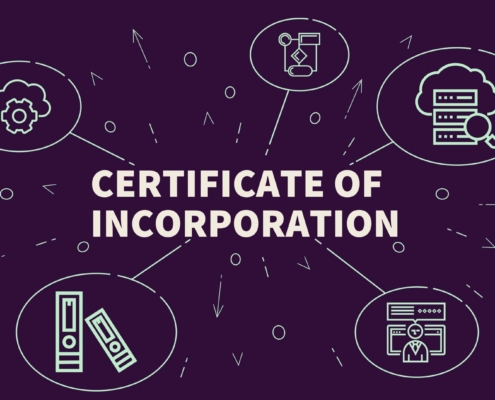Service Charge vs. Tip: Understanding the Key Differences
The restaurant industry has long relied on gratuities as a way to supplement employee wages and incentivize exceptional service. However, the growing trend of service charges has added complexity to the dining experience, leaving many diners wondering about the differences between the two. While both serve to compensate restaurant staff, service charges and tips have distinct purposes, implications, and effects on customers, employees, and businesses.
What Is a Service Charge?
A service charge is a fee that restaurants add to customers’ bills. This amount doesn’t go to the server — the business collects the money. A service charge is a fee collected to pay for services related to the primary product or service being purchased.
A service charge is not considered a tip. The business, usually a restaurant, adds the service fee to to customers’ bills to cover any type of cost, including supply chain expenses, operational costs, staff wages, or a party that has more than 4 people at a table. To offset rising costs of goods and utilities, labor, and employee benefits, as well as to boost profits, many restaurant owners have employed service charges. Fixed fees added to customers’ bills are service charges, whereas tips are voluntary payments customers make to employees. Typically intended to cover the cost of completing the transaction, a service charge is a fee businesses add to an invoice or bill.
Examples of service charges include:
- Automatic gratuity for large parties: Often applied to groups of six or more, this charge ensures servers are fairly compensated, even if the bill is split among guests.
- Delivery fees: These cover costs such as packaging and transportation for food delivery.
- Administrative fees for events: Common in catering or banquet services, these fees help cover overhead expenses and additional staff requirements.
Unlike a tip, the restaurant collects the service charge and decides how the money is allocated. In most cases, restaurant owners can keep the service charge. Restaurant service charges typically range from 3% to 20% of a customer’s bill. However, this total, as well as what the service charges are used for, varies greatly based on the location of the restaurant.
What Is a Tip?
A tip, also referred to as gratuity, is a discretionary, additional payment on top of a check total given as a token of gratitude for good service and great hospitality. Unlike a service charge, a tip is discretionary, meaning customers decide how much to give based on their experience. Tips are voluntary, not predetermined, and owned by tipped employees.
According to the IRS, tips must meet specific criteria:
- The payment is made voluntarily.
- The customer determines the amount.
- The payment is not subject to employer policy or negotiation.
- The customer decides who receives the payment.
Tips are generally given directly to the employee or distributed among the staff through a tip pool. Tips and service charges can both be used in the same restaurant operation. A tip pool is considered a more equitable payment system for restaurant employees. It means that cooks, bussers, and hosts also benefit, and it often improves teamwork and boosts morale.
Are Service Charges Taxable?
Yes, service charges are taxable. The tax treatment of service charges depends on how they are classified and used, but in general:
Service charges are typically considered part of a restaurant’s gross revenue and are subject to sales tax (if applicable in the jurisdiction). Payments classified as service charges are considered wages if they are distributed to employees. The IRS explicitly states that service charges are not tips. Payments classified as service charges are considered wages if they are distributed to employees. Service charges are mandatory, predetermined, and the property of the restaurant to use however they see fit.
The IRS distinguishes service charges from tips using four key factors:
- The payment must be made free from compulsion.
- The customer must have the unrestricted right to determine the amount.
- The payment should not be the subject of negotiations or dictated by employer policy.
- The customer has the right to determine who receives the payment.
If service charges are distributed to employees, they are treated as non-tip wages under Internal Revenue Service (IRS) guidelines. As a result, they are subject to payroll taxes, including Social Security tax, Medicare tax, and federal income tax withholding.
Key Differences Between Service Charges and Tips
1. Nature of Payment
- Service Charge: Mandatory and included in the bill.
- Tip: Optional and at the discretion of the customer.
2. Ownership and Distribution
- Service Charge: Collected by the business, which determines its allocation.
- Tip: Belongs to the employee and is either kept individually or pooled among staff.
3. Tax Implications
- Service Charge: Taxable as business revenue or as wages if distributed to employees.
- Tip: Taxable as income for employees and reported separately from wages.
A tip, on the other hand, is an amount of money a customer gives directly to the server. Guests may leave cash tips or add noncash tips to their credit card receipts.
Pros and Cons of Service Charges
Pros
- Predictable Income for Businesses: Service charges provide a steady revenue stream, helping restaurants manage payroll and operational expenses.
- Equity Among Staff: Service charges can be distributed among all employees, including back-of-house staff, promoting fairness.
- Offset Rising Costs: They help restaurants cope with inflation and increasing labor costs.
Cons
- Customer Dissatisfaction: Many diners view mandatory charges as unfair, especially if service quality is poor.
- Reduced Tips: Customers may tip less when a service charge is included, potentially affecting overall employee earnings.
- Complex Regulations: Service charges are subject to state and local laws, which can complicate their implementation. Some customers may have a negative perception of automatic service charges and would be less likely to return to a restaurant that used them.
Pros and Cons of Tips
Pros
- Incentive for Quality Service: Employees are motivated to provide excellent service when their earnings depend on customer satisfaction.
- Familiarity: Tipping is a well-established practice in many cultures, especially in the United States.
- Direct Employee Benefit: Tips go directly to the employee, offering immediate financial rewards. Tipping incentivizes servers to provide an exceptional dining experience.
Cons
- Income Inconsistency: Tips can fluctuate based on customer behavior, leading to financial instability for workers.
- Potential for Inequity: Disparities in tips can lead to tension between staff members, especially between front-of-house and back-of-house teams.
- Customer Pressure: Some diners feel obligated to tip, even when service does not meet expectations. For employees, tipping can create an inconsistent income stream that fluctuates significantly based on customer habits and attitudes.
Final Thoughts
Understanding the differences between service charges and tips is crucial for restaurant owners, staff, and customers alike. While service charges provide a predictable and equitable income model, they come with the complexity of tax implications and customer perceptions. Tips, on the other hand, incentivize service quality but can lead to inconsistent income and inequity. The key is to find the best solution for you, your staff, and your customers.
For restaurants, the choice between service charges and tips—or a combination of the two—should be guided by business goals, local regulations, and clear communication with both staff and customers. By prioritizing transparency and compliance, restaurants can navigate these payment structures successfully while ensuring a positive experience for all parties involved.






























